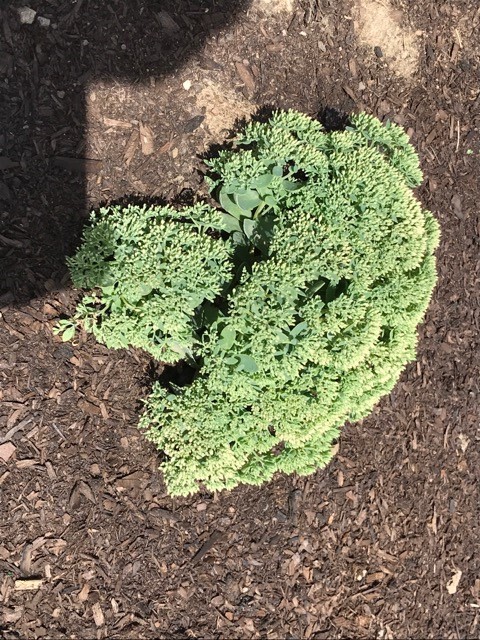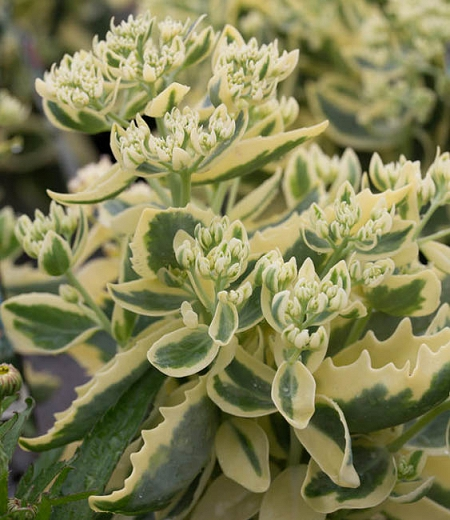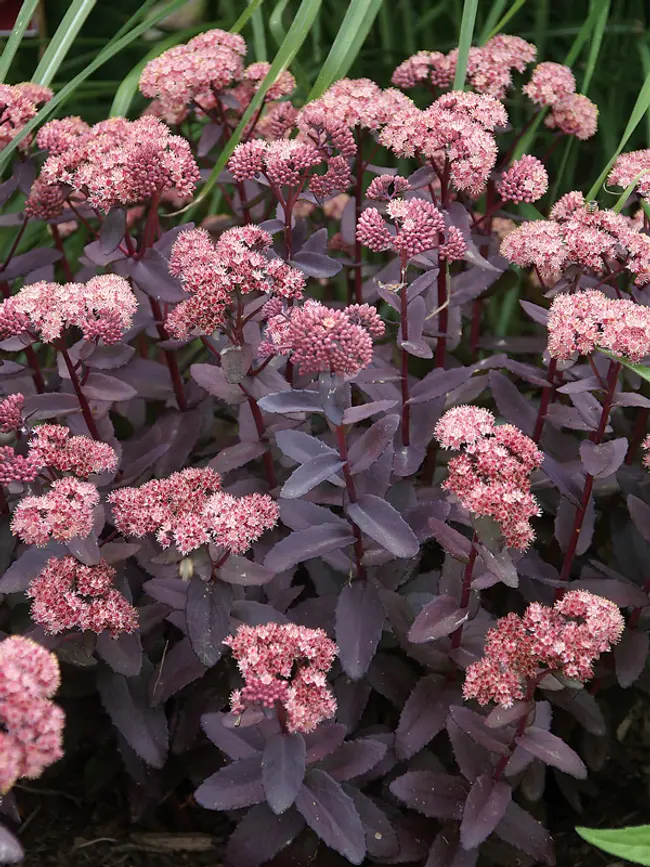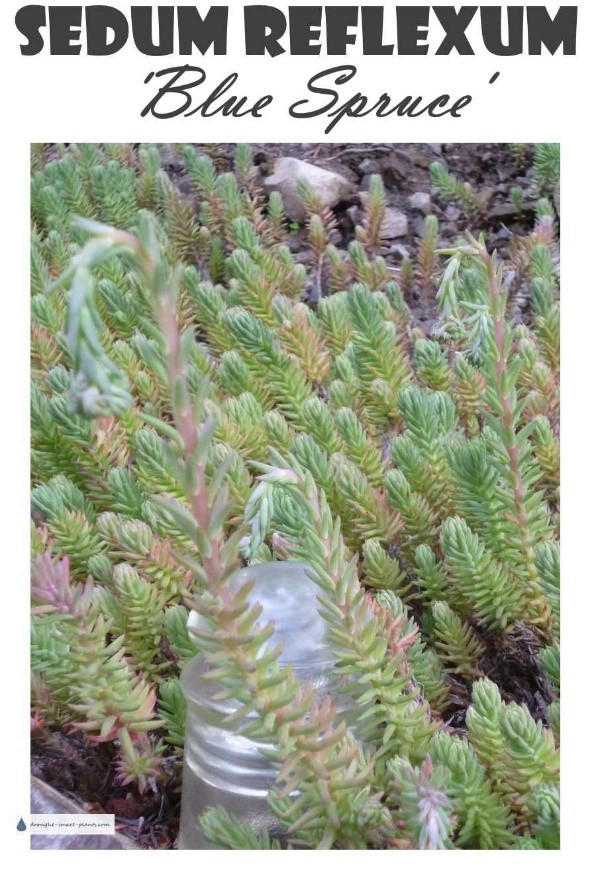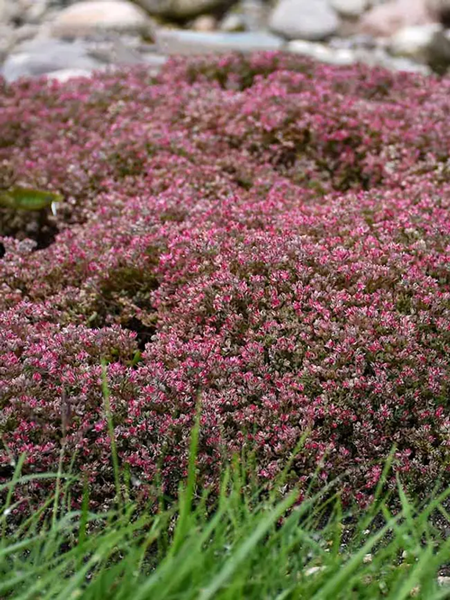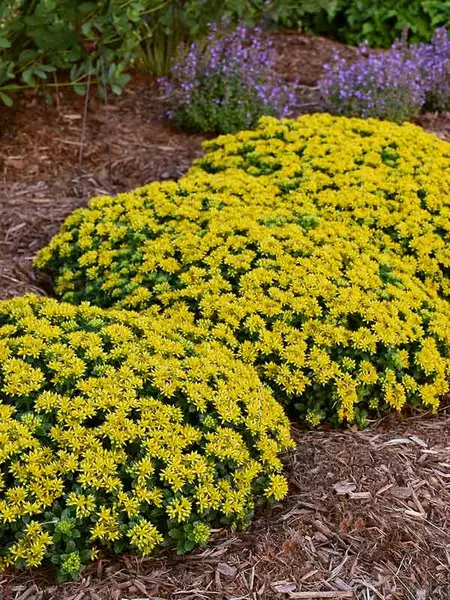Alyssum Flowers
Sedum, also called stonecrop or ice plant is in a large family (Family Crassulaceae) of succulents that mostly grow in sunny, dry areas in Zones 4-9 and fit well in rock gardens, train and miniature gardens, along sidewalks and edges of perennial or pollinator gardens. Native to temperate zones and mountains in the tropics, they are heat and drought tolerant as well as deer/rabbit resistant. The flowers attract a myriad of small-medium sized butterflies, skippers, many species of bees as well as colorful flies and beetles. You can’t go wrong planting a variety of these showy and attractive pollinator magnets!
Sedum has two main growth habits, upright and creeping, with pale green, blue or brick red leaves. The flower color ranges from white to pink to fiery red. Upright sedums or border sedums (Hylotelephium spp) begin as short, green and fleshy mounds each Spring then the stems elongate to reach 2-3’ tall with broad flat leaves. In late Summer, clusters of four petaled, star shaped flowers develop toward the top of the plant and at the tip of each stem resulting in masses of color that lasts over a month. As the temperature cools in the Fall, both the plant and flowers deepen in color.
The creeping varieties vary in shape and growth habit as well as some are short but upright while others creep horizontally across the ground. They rarely exceed 2” in height. Most people are familiar with “Hens and Chicks” which are popular additions to planters, but many trailing species are available, all of which attract pollinators and brighten the garden. Another common cultivar is golden stonecrop, a creeper with spikes of bright yellow flowers. Others have green leaves with dark red edges and red flowers or fuzzy white leaves. The most common is Sedum ‘Autumn Joy’, grown at AI Root, which has hot pink flowers in the Fall which darken to deep red. The leaves gradually become plum colored which adds a dramatic splash of color when other gardens have turned brown.
Stonecrop can easily be propagated by cutting pieces and rooting in moist potting mix or directly into the ground. Lay the stems on moist soil or cover a part of it with moist leaves or soil. Within a few weeks, the section under the soil will have small roots. Keep the area moist until new growth appears then transplant it carefully or leave it where it is growing.
References:
https://www.gardenersworld.com/search/plant/?q=sedum
https://www.britannica.com/plant/sedum
https://www.gardenia.net/plant/malus-adams







